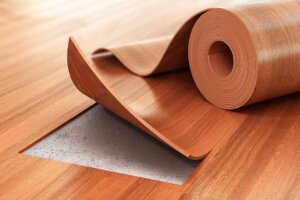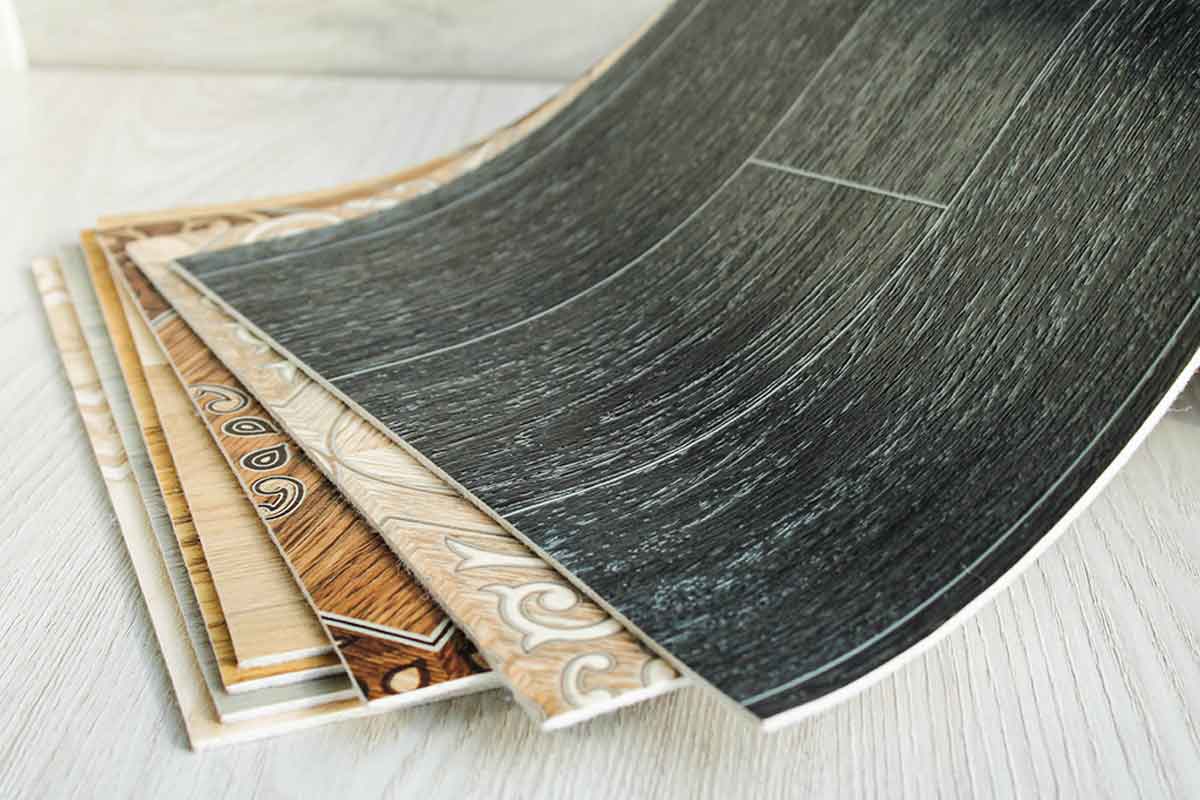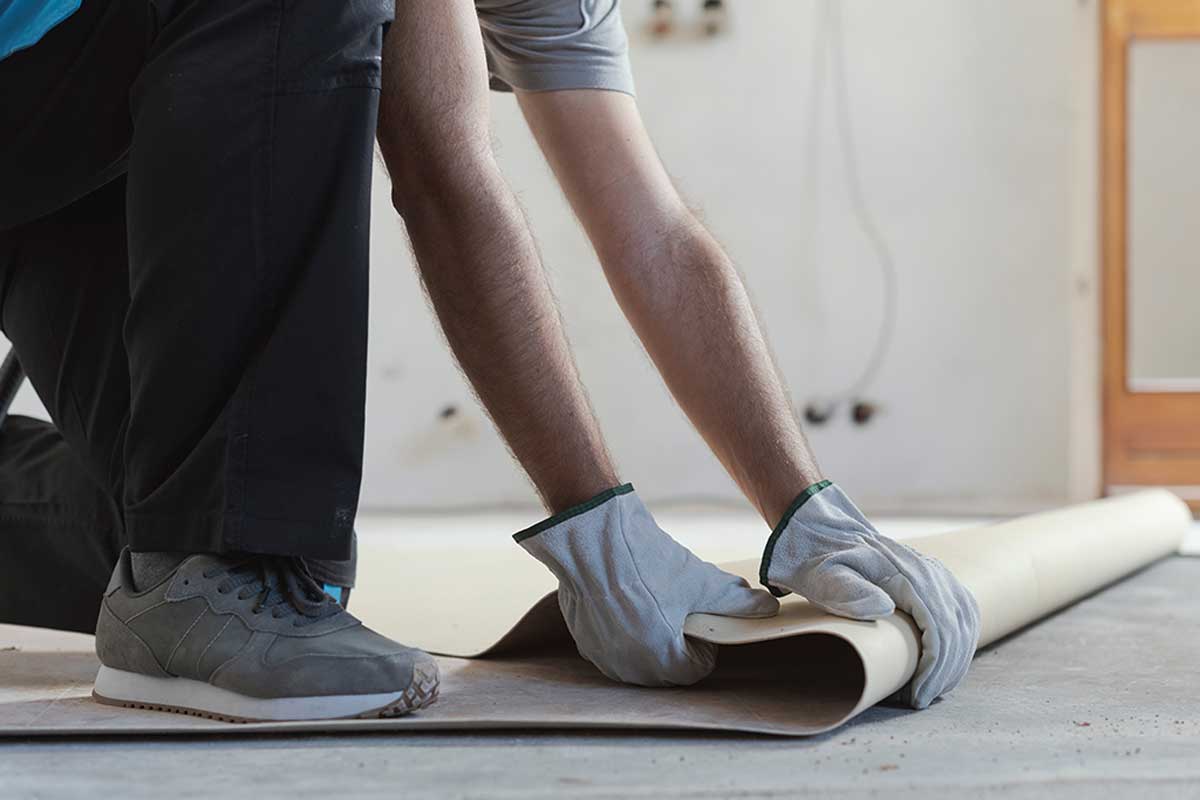Linoleum Flooring: Advantages and Disadvantages

Linoleum flooring was discovered in the 19th century and became very popular in both the United States and England. It’s a natural material used to create floor coverings. Made from linseed oil and mixed with sawdust or cork powder, this is then placed on a canvas or cloth support.
For many people, linoleum is the flooring of choice, as they feel comfortable with the designs and quality it offers. This is a floor with many advantages, (and a couple of disadvantages), that you should consider if you want to use it in your home.
Advantages of linoleum flooring
Linoleum flooring is often compared to and confused with vinyl flooring. Still, it’s popular with some savvy buyers and decorators due to the advantages it offers over its peers.
We’re going to tell you more about those characteristics that make it so appealing.
Environmental friendly

Linoleum flooring is made from natural, raw materials. Mainly, it’s made from linseed oil, cork, natural resins, wood flour, and ecological pigments, among others. This makes it one hundred percent biodegradable and environmentally friendly.
Linoleum flooring doesn’t reflect scratches or scuffs
Manufactured in layers of the same color and design, linoleum flooring is quite thick. This makes scratches less noticeable than hardwood floors.
In fact, the components of cork and resins that it contains, help to avoid scratches and scuffs that affect the appearance of the floor.
It’s resistant
Limestone powder is another of the materials that linoleum flooring is made of. This provides great resistance, making the floor much stronger and more durable than other types of flooring. It withstands footfall and even blows with heavy objects.
All this means that, in homes where the budget isn’t a problem, this is the floor of choice!
It’s anti-allergenic and antimicrobial
Linoleum materials make this a natural floor, so it doesn’t generate allergies in people who are sensitive to certain chemical components. In addition, it’s antistatic, so dust and dirt that fall on it don’t adhere to the surface. This same characteristic also makes it repel mites.
These conditions mean that it’s a great material to use in children’s bedrooms, homes for the elderly, or in houses for vulnerable people with illnesses.
It’s available in a variety of styles

If you’re a lover of unique colors and designs, linoleum flooring is the one for you! In this material, it’s possible to find different shapes from patterns and textures, with which you can play to complement the decor of your entire home.
It’s economic
This is a situation where economics are weighed with durability. It’s much cheaper than the fancy woods and tiles that are all the rage today. Its price is very competitive in the market since this material lasts a long time.
Linoleum flooring is easy to care for
Dirt doesn’t adhere to this type of flooring. Which makes it easy to care for and to clean. A soft broom will be enough to pick up the dirt, and a damp cloth will be enough to finish the cleaning.
Disadvantages of linoleum flooring
Not everything is perfect! There are negative aspects that you should consider before you make a purchase. In this case, we’ll talk about the disadvantages of linoleum flooring.
Although there aren’t many, it’s necessary to consider them to recognize whether or not it’s the right material for you.
It’s complex to install

Linoleum flooring isn’t for all homes, so it’s not the most common or popular flooring available. This can mean it’s difficult to find trained personnel to install it. It can also mean that the companies or professionals that specialize in this material have slightly higher labor rates.
To this, we’ll add that it’s necessary to invest in the preparation of the surface on which it’s to be installed. This is important in order to have the best possible result.
Linoleum flooring isn’t very resistant to moisture
Moisture is one of the biggest enemies of linoleum flooring. Its materials make it very prone to storing moisture inside, which can damage it. Water causes it to rot, which is why, if damaged, the layers become uneven, affecting the stability of furniture.
For this reason, it’s not recommendable to install linoleum flooring in rooms such as the bathroom, where it may be exposed to water and humidity.
Linoleum flooring was discovered in the 19th century and became very popular in both the United States and England. It’s a natural material used to create floor coverings. Made from linseed oil and mixed with sawdust or cork powder, this is then placed on a canvas or cloth support.
For many people, linoleum is the flooring of choice, as they feel comfortable with the designs and quality it offers. This is a floor with many advantages, (and a couple of disadvantages), that you should consider if you want to use it in your home.
Advantages of linoleum flooring
Linoleum flooring is often compared to and confused with vinyl flooring. Still, it’s popular with some savvy buyers and decorators due to the advantages it offers over its peers.
We’re going to tell you more about those characteristics that make it so appealing.
Environmental friendly

Linoleum flooring is made from natural, raw materials. Mainly, it’s made from linseed oil, cork, natural resins, wood flour, and ecological pigments, among others. This makes it one hundred percent biodegradable and environmentally friendly.
Linoleum flooring doesn’t reflect scratches or scuffs
Manufactured in layers of the same color and design, linoleum flooring is quite thick. This makes scratches less noticeable than hardwood floors.
In fact, the components of cork and resins that it contains, help to avoid scratches and scuffs that affect the appearance of the floor.
It’s resistant
Limestone powder is another of the materials that linoleum flooring is made of. This provides great resistance, making the floor much stronger and more durable than other types of flooring. It withstands footfall and even blows with heavy objects.
All this means that, in homes where the budget isn’t a problem, this is the floor of choice!
It’s anti-allergenic and antimicrobial
Linoleum materials make this a natural floor, so it doesn’t generate allergies in people who are sensitive to certain chemical components. In addition, it’s antistatic, so dust and dirt that fall on it don’t adhere to the surface. This same characteristic also makes it repel mites.
These conditions mean that it’s a great material to use in children’s bedrooms, homes for the elderly, or in houses for vulnerable people with illnesses.
It’s available in a variety of styles

If you’re a lover of unique colors and designs, linoleum flooring is the one for you! In this material, it’s possible to find different shapes from patterns and textures, with which you can play to complement the decor of your entire home.
It’s economic
This is a situation where economics are weighed with durability. It’s much cheaper than the fancy woods and tiles that are all the rage today. Its price is very competitive in the market since this material lasts a long time.
Linoleum flooring is easy to care for
Dirt doesn’t adhere to this type of flooring. Which makes it easy to care for and to clean. A soft broom will be enough to pick up the dirt, and a damp cloth will be enough to finish the cleaning.
Disadvantages of linoleum flooring
Not everything is perfect! There are negative aspects that you should consider before you make a purchase. In this case, we’ll talk about the disadvantages of linoleum flooring.
Although there aren’t many, it’s necessary to consider them to recognize whether or not it’s the right material for you.
It’s complex to install

Linoleum flooring isn’t for all homes, so it’s not the most common or popular flooring available. This can mean it’s difficult to find trained personnel to install it. It can also mean that the companies or professionals that specialize in this material have slightly higher labor rates.
To this, we’ll add that it’s necessary to invest in the preparation of the surface on which it’s to be installed. This is important in order to have the best possible result.
Linoleum flooring isn’t very resistant to moisture
Moisture is one of the biggest enemies of linoleum flooring. Its materials make it very prone to storing moisture inside, which can damage it. Water causes it to rot, which is why, if damaged, the layers become uneven, affecting the stability of furniture.
For this reason, it’s not recommendable to install linoleum flooring in rooms such as the bathroom, where it may be exposed to water and humidity.
All cited sources were thoroughly reviewed by our team to ensure their quality, reliability, currency, and validity. The bibliography of this article was considered reliable and of academic or scientific accuracy.
- Pavimentos saludables y sostenibles. Selección de un pavimento resiliente para el sector sanitario europeo.







